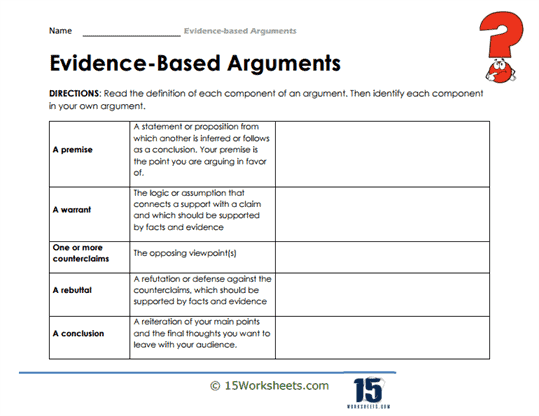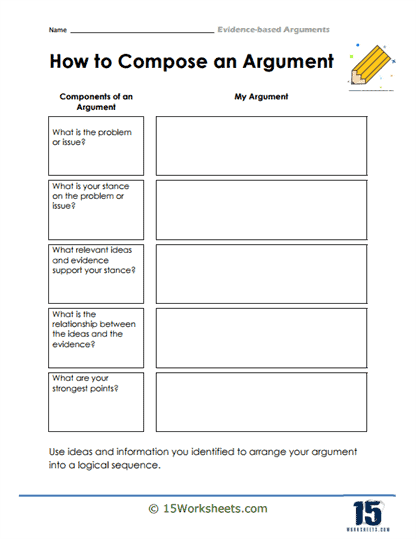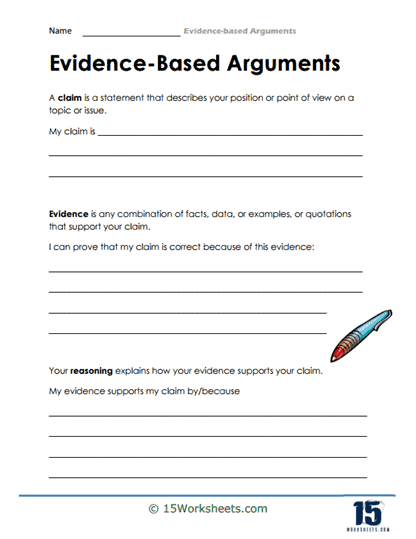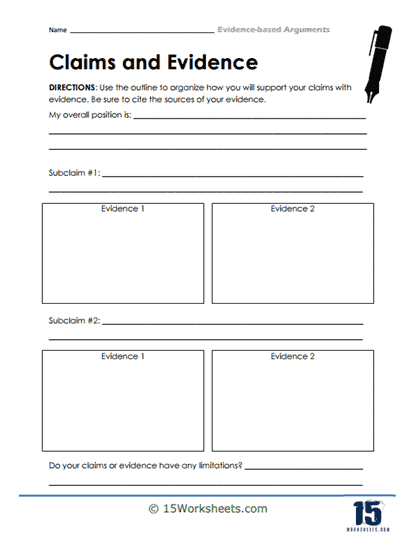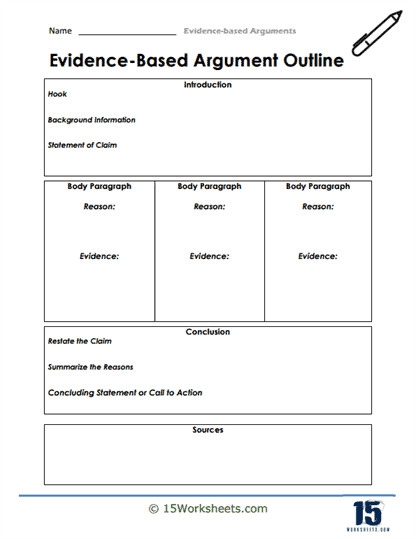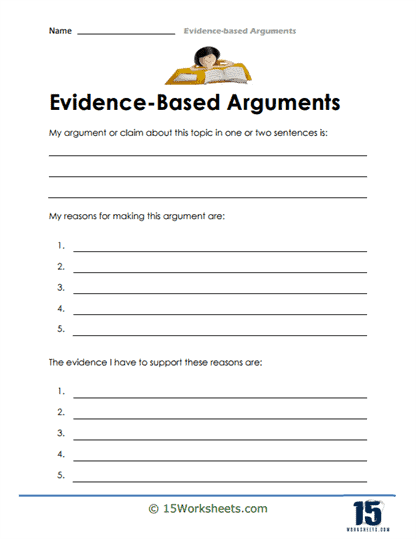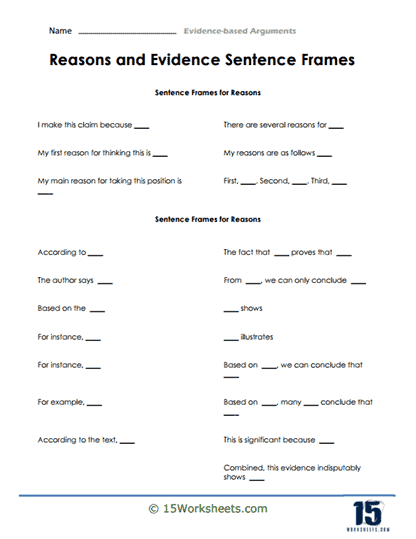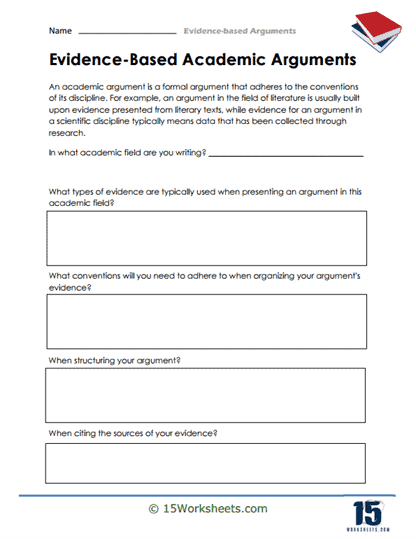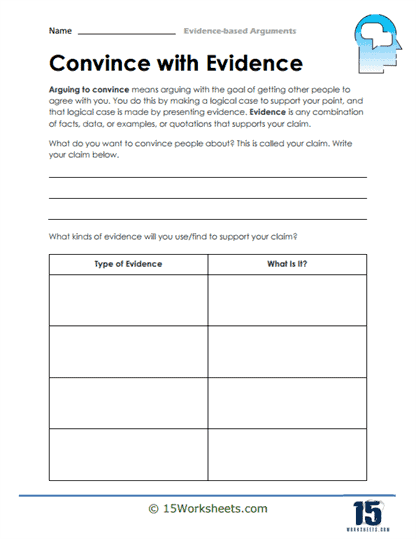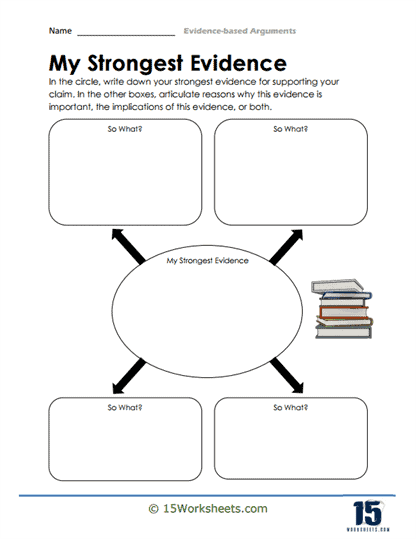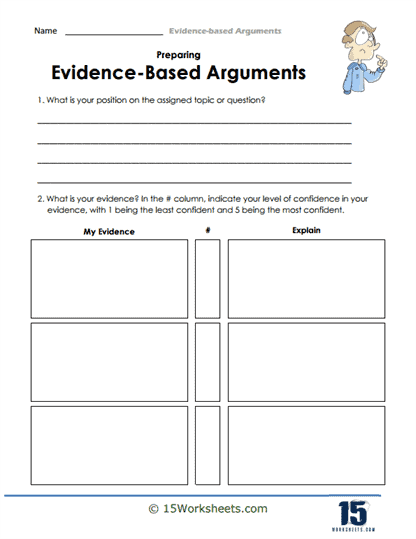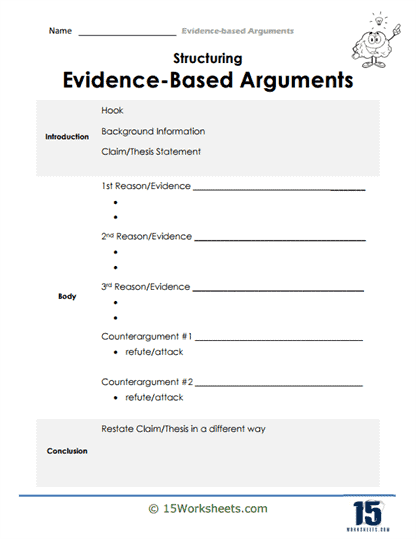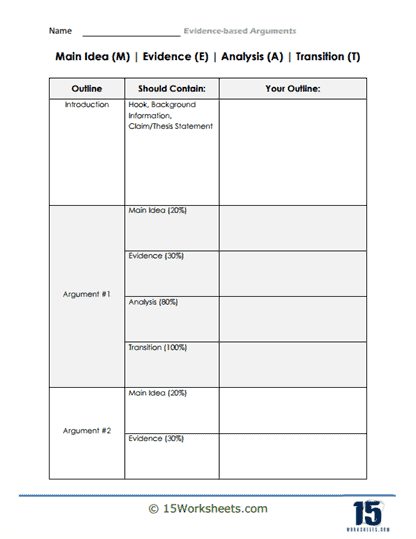Evidence Based Writing Worksheets
All About These 15 Worksheets
This series of 15 worksheets focuses on developing students’ skills in evidence-based writing. This series is designed to guide students through the process of effectively incorporating evidence to support their claims and strengthen their arguments. By emphasizing critical thinking, research, and analysis, these worksheets empower students to produce well-reasoned, persuasive, and credible written work. Through these worksheets, students will:
- Identify the components of a given argument like its premise, warrant, counterclaims, rebuttal, and conclusion;
- Be guided on how to compose their own well-informed and evidence based argument;
- Understand the form and function of claims, evidence, and reasoning;
- Learn to cite credible sources to support their arguments;
- Create their own evidence based arguments by using an outline to help them organize how they support their claims;
- Be familiar with commonly used words or phrases used in presenting claims and evidence;
- Evaluate sources for accuracy, authority, currency, and relevance to the topic at hand;
- Critically examine evidence, identify underlying assumptions, and draw meaningful conclusions;
- And craft well-structured paragraphs, incorporate evidence, and maintain a strong argumentative focus.
Overall, this series of worksheets equips students with the necessary tools and skills to excel in evidence-based writing. By emphasizing critical thinking, research, and analysis, these worksheets enable students to effectively incorporate evidence, evaluate sources, and construct compelling arguments. Through practice and application of these skills, students will develop the ability to produce persuasive, well-supported written work that engages and convinces their readers.
How to Approach Evidence Based Writing
Evidence-based writing is an approach to writing that requires the use of credible sources and logical reasoning to support claims and arguments. It is widely used in academic, scientific, and professional contexts to create persuasive and well-researched content. Here are some steps to help you perform evidence-based writing:
Choose a topic and form a thesis statement – Select a subject for your writing and develop a clear, concise thesis statement that encapsulates your central argument or claim. The thesis statement should guide the direction of your research and writing.
Conduct research – Gather information from reputable sources such as academic journals, books, government publications, and authoritative websites. Look for evidence that supports your thesis statement, as well as information that challenges it. This will help you build a balanced and informed argument.
Evaluate sources – Assess the credibility, relevance, and reliability of the sources you’ve gathered. Consider factors such as the author’s expertise, the publication’s reputation, the recency of the information, and any potential biases.
Organize your evidence – Organize your research and evidence by categorizing it based on themes, subtopics, or the points you want to make in your writing. This will help you identify patterns, connections, and potential gaps in your argument.
Develop an outline – Create a structured outline for your writing that includes an introduction, body paragraphs, and conclusion. Each body paragraph should focus on a specific point or piece of evidence that supports your thesis statement.
Incorporate evidence – Use a variety of evidence types, such as statistics, case studies, examples, expert opinions, or quotes, to support your claims. Be sure to introduce, explain, and analyze each piece of evidence within the context of your argument.
Use proper citation – When referring to evidence from your sources, always cite them correctly using the appropriate citation style (e.g., APA, MLA, Chicago). This gives credit to the original authors and adds credibility to your writing.
Address counterarguments – Acknowledge and address opposing viewpoints or counterarguments in your writing. Present evidence to refute these opposing views, demonstrating that your argument is well-reasoned and robust.
Revise and edit – Review your writing for clarity, coherence, and organization. Ensure your argument flows logically and your evidence is presented effectively. Proofread for grammar, punctuation, and spelling errors, and make any necessary revisions.
By following these steps, you can perform evidence-based writing that is persuasive, well-researched, and grounded in reliable sources. This approach not only enhances the quality of your writing but also demonstrates your commitment to intellectual integrity and critical thinking.

